Using boric acid for strawberries
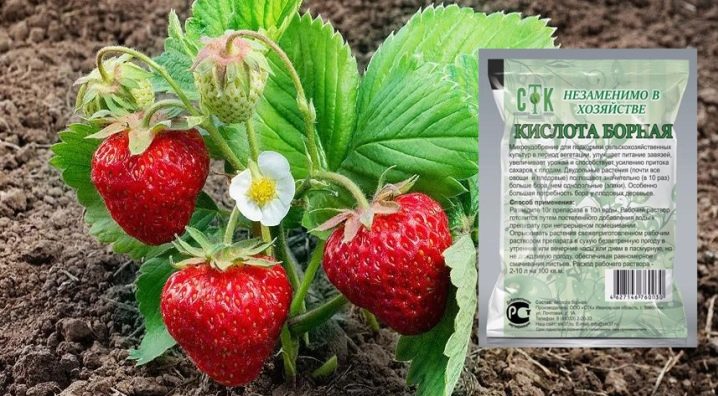
Full care of any crop is a guarantee of good yields and high quality fruits. Strawberries are no exception, and boric acid occupies a significant place among the important components of care. However, the use of this tool has a number of nuances and rules, non-observance of which often leads to the most unpleasant consequences.
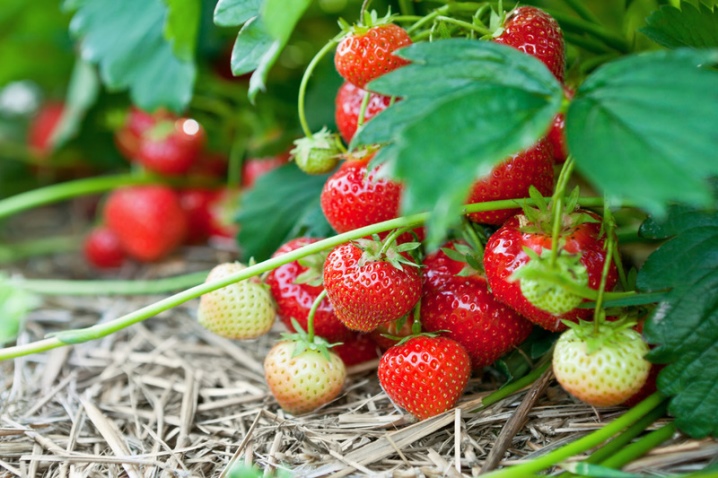
Advantages and disadvantages
In order for the culture not to fall ill and to please gardeners with excellent harvests, in areas with infertile soils, the need for fertilizing is beyond doubt.
Solutions of boric acid and some other components have become such a simple, inexpensive, effective and useful feeding.
These dressings can significantly increase yields, form bushes that are stronger and more fruitful.
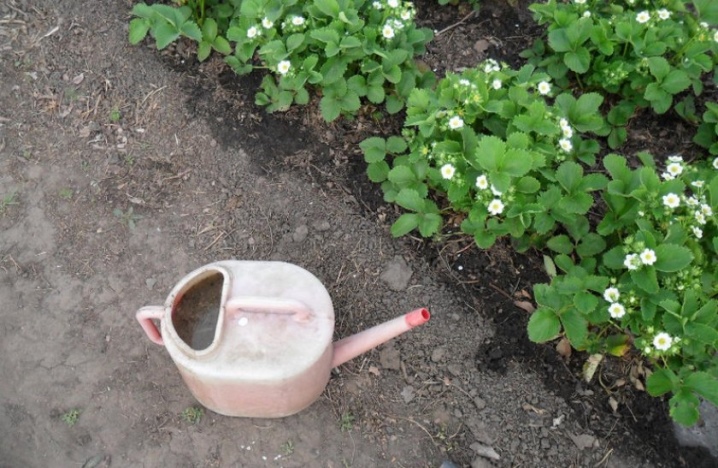
Most of all, strawberry bushes planted in forest or sod-podzolic soil need boron. Boric acid is of great benefit in the enrichment of soils oversaturated with carbonates. Strawberry varieties growing on marshy or acidic soils are all the more in need of such care.
The microelement boron is a powdery substance of gray color, odorless, consisting of small crystals in structure. In everyday life, this microelement is not used directly, but is used in the form of boric acid, which consists of small white crystals that dissolve well in hot (about 70 ° C) water. When using appropriate dosages boric acid is not harmful to humans (hazard class 4) and crops.
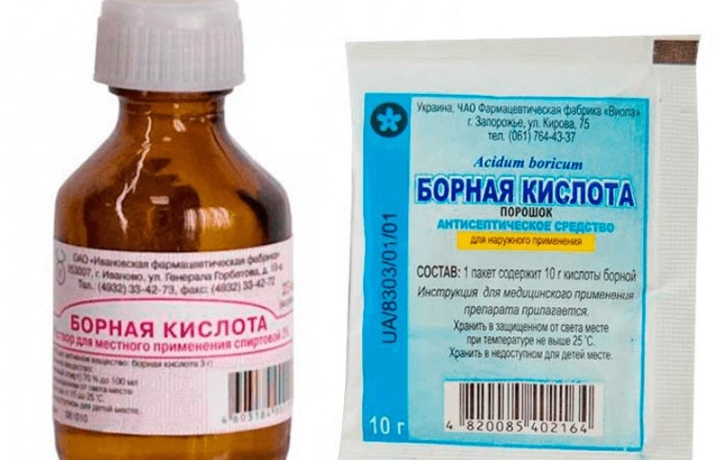
Boric acid for strawberries is used for soil enrichment, accelerating the process of seed growth, as an insecticide and fungicide. Boron significantly affects the course of plant development, and its deficiency in soils sometimes even leads to significant losses in the volume of the harvested crop.
Boron promotes the synthesis of nitrogenous compounds necessary for plants, positively affects the quality of metabolic processes, and effectively increases the chlorophyll content in greenery.

Competent, balanced use of this product has a productive effect on the growth of strawberry plantations and the quality of berries.
-
When this substance is added, an increase in the number of ovaries on strawberry bushes, the degree of yield increases.
-
Strawberry fruits that are not deficient in boron grow larger and their taste improves.
-
The presence of boric acid in the soil reliably protects the culture from the invasion of insects, for example, from ants (they carry aphids around the site). Promotes the prevention of various diseases - dry and brown rot, bacteriosis.
-
With a sufficient amount of boron, the culture can withstand dry days more confidently. Flowers stick to bushes more reliably during windy weather.
-
This type of fertilizer is an excellent tool for combating wrecking attacks.
-
Boric acid prophylaxis helps in the fight against fungal formations.
-
The leaves on the bushes get an intense green color, do not dry out and do not wither.
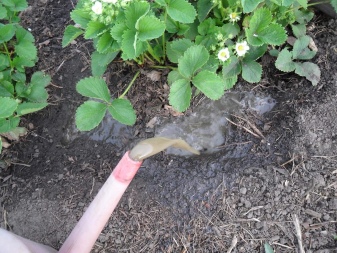
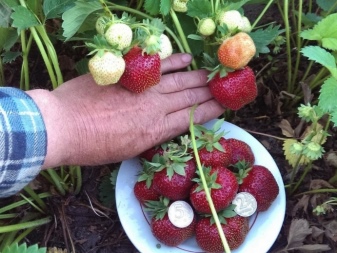
Of the minuses, we note:
-
the introduction of boric acid into acidic soils is not recommended;
-
its use is prohibited on rainy days, as well as before the process of liming the soil;
-
the use of this substance will bring tangible benefits only with the exact observance of the appropriate proportions, the exact timing of the addition of top dressing;
-
it is important to follow the attached guidelines for the use of the substance;
-
oversaturation of the soil with boric acid does not give anything positive, but is fraught with loss of yield.
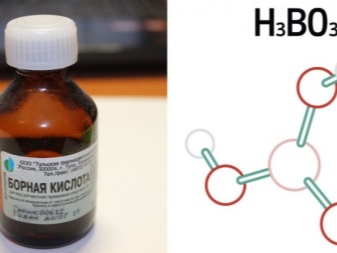
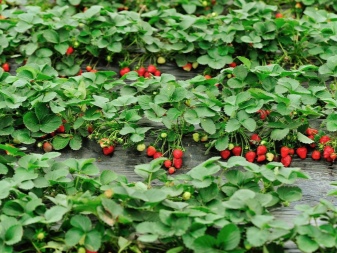
Indications and contraindications
The well-known signs of boron starvation will help you know when it's time to feed.
-
Take a closer look at the foliage on the bushes - with a deficiency of boron, the leaves are bent, and their edges begin to suffer from necrosis (they die off and fall off). The process of wilting of bushes occurs even with good watering.
-
Lack of boron leads to the fact that the fruits ripen poorly, berries on such bushes become smaller, while it becomes clear that there is no hope for a large harvest.
-
Lack of boron also affects the taste of the fruit - they become savory, watery, bland and tasteless.
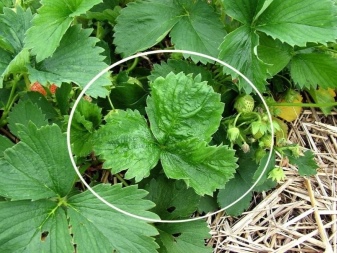
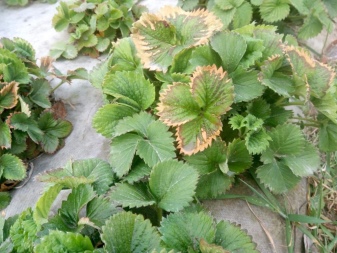
An excess of boron also manifests itself in a number of signs.
-
Burn formations appear on the lower leaves. Burns occur in the form of brown spots spreading throughout the entire leaf blade.
-
Excessive doses of boron also lead to leaf necrosis, they can undergo significant deformations, for example, acquire a domed configuration, turn yellow.
-
Root system development process and the aerial part of the bush in the soil overflowing with this microelement slows down significantly.
Boron is not recommended in all cases. If there are signs of boric oversaturation, then such feeding should be stopped immediately.
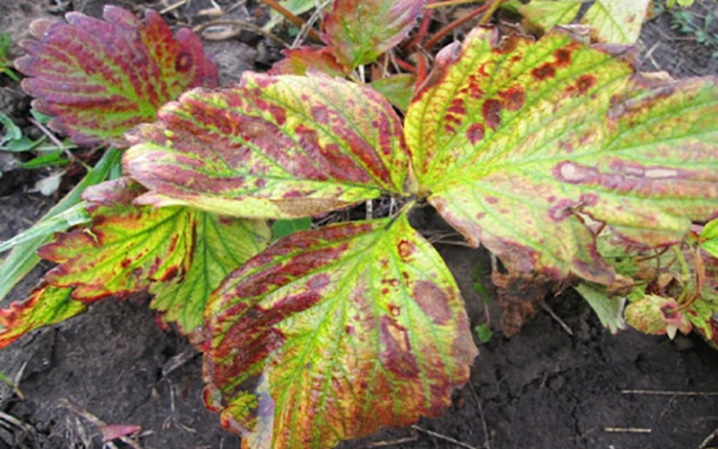
Terms of application
Top dressing is carried out in two ways - under the roots or by the foliar method.
The procedure for introducing the substance has its own characteristics.
-
The first boron feeding is carried out in the spring, during the snow melting period, maintaining the required level of the necessary microelements in the bushes after the winter period. Both methods of feeding are used here - either in the snow or under the root.
-
Foliar feeding is carried out exclusively before the flowering process for the ovary... During flowering, such treatment is not recommended - there is a possibility of harm to beneficial pollinating insects. However, it is recommended to spray the bushes with a mild boric acid solution during the period of flower budding (in summer). Nevertheless, some gardeners believe that it is possible to process flowering strawberries using root and foliar feeding methods (water with a solution carefully), motivating this with an increase in the level of yield.
-
The third feeding occurs during the fruiting period. It is performed under the root with a solution of weak concentration. Even a small amount of solution will be sufficient here.
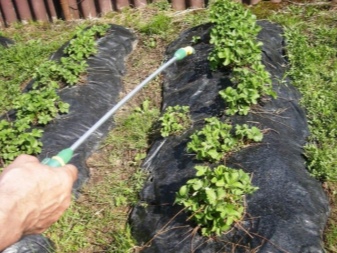
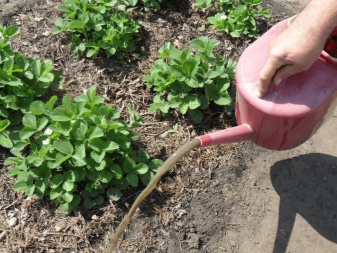
Solution recipes
It is important to remember that feeding the culture with this agent is not carried out by the trivial spreading of the powder over the beds, but by the method of adding liquid solutions. Such feed mixtures are prepared according to proven recipes that specifically correspond to the proportions, and the method of application, and the timing of use.
The fertilizer dosage must also be respected.
The use of this microelement in the form of a powder is fraught with the occurrence of chemical burns on the leaves, stems and flowers of the culture. Foliar spraying of bushes is carried out in the evening or on a cloudy day, in warm weather. In this case, sprayers are used that give a fine, misty degree of atomization.
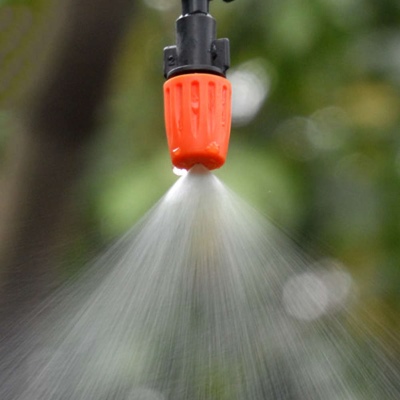
Here are the most common recipes for solutions used in practice.
With iodine
Iodine is an excellent antiseptic that helps to get rid of and prevent the occurrence of a number of different diseases. It is effective against fungal diseases and various bacteria. For the strawberry weevil, which often settles on the bushes and soon devours them, iodine is an implacable and effective enemy.
In addition to the disinfecting effect, iodine helps well in a number of other cases:
-
stimulates a more efficient budding process, flowers do not fall off, and this directly affects the level of yield;
-
treatment of bushes with iodine in the fall negatively affects the development of fungal spores, a similar effect is achieved in the spring;
-
iodine has a positive effect on the sugar component in fruits, since it intensifies the metabolic process;
-
iodine also has an excellent effect on increasing the duration of the transport of fruits - they are better stored.
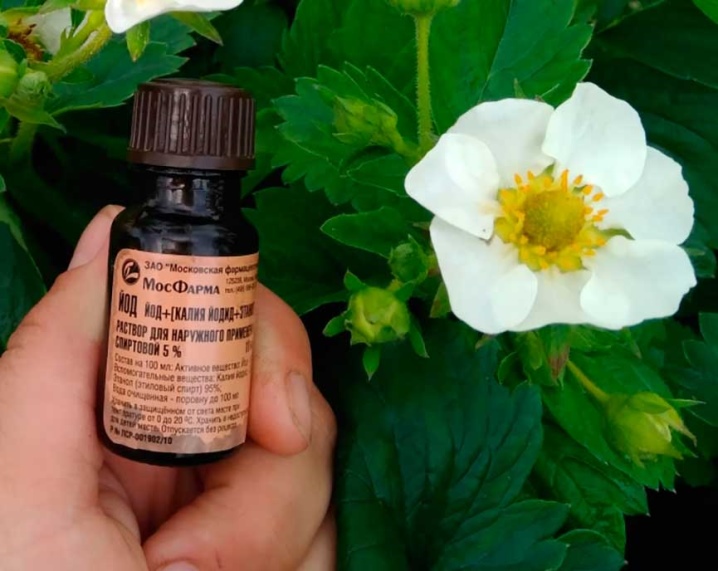
Several recipes.
-
Often, boric acid is used together with manganese or iodine to obtain a greater effect, receiving and feeding, and at the same time combating diseases of fungal origin... Such a composition should be prepared in 2 steps (for better dissolution). The additions are added to the already cooled prepared composition (2 g of acid per 10 l of water): 1 g of manganese, about a glass of ash, 10 ml of iodine. Before processing, the soil must be irrigated, otherwise you can burn the roots of the plants with a solution (if the spring is wet and the soil is damp, then this is optional). Iodine evaporates pretty soon, and therefore it is not worth storing the solution, processing is carried out immediately after the preparation of the composition. The composition does not help the plants well if the soil on which they are grown is very poor.
-
For the root feeding method, prepare the following solution: 10 ml of pharmaceutical iodine, 2 g of boric acid and 2 tablespoons of wood ash are dissolved in 10 liters of warm water.
-
Until the buds bloom, spraying with a solution containing 10 g of boric acid, 200 g of ash, as well as 30 drops of a 3% alcohol solution of iodine is used. All this is dissolved in 10 liters of water. After preparation, the solution is applied to the plants by spraying. This must be done before the buds bloom.

With potassium permanganate
Manganese solutions.
-
The tool used in the spring for sub-root application can be prepared in the following composition: 1-2 g of boric acid, 1 g of manganese should be diluted in 10 liters of warm water. Next, mix the composition thoroughly, and then use it as directed. The specified volume is quite enough for processing 30 bushes.
-
Another composition of the same purpose, time and method of application includes 1-2 g of boric acid, 1 g of manganese and one tablespoon of ash, which should be diluted in 10 liters of warm water. The scope of use is similar.
-
For the ripening period of berries a special composition is prepared - 2 g of boric acid, 20 g of carbamide, 3 g of potassium permanganate and 100 ash per 10 liters of water.
-
For root feeding option 2 g of boric acid, 1 tablespoon of urea, 0.5 cups of ash and 2 g of potassium permanganate (potassium permanganate) are dissolved in 10 liters of warm water.
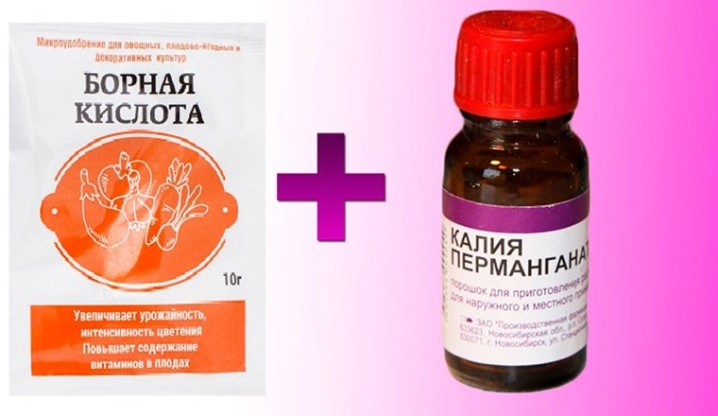
Other
-
A simple foliar feeding option applied before flowering time: 5 g of acid are thoroughly mixed in 10 l of water. Spraying is carried out using a sprayer.
-
An effective prophylactic agent against diseases of fungal origin is a composition that includes boric acid and potassium salt (2 g of salt and 2 g of acid are stirred in 10 liters of water)
-
A mixture of acid and superphosphate helps to exclude wilting of fruits and cracking on them (for 10 liters of water - 2 g of acid, 10 g of superphosphate).
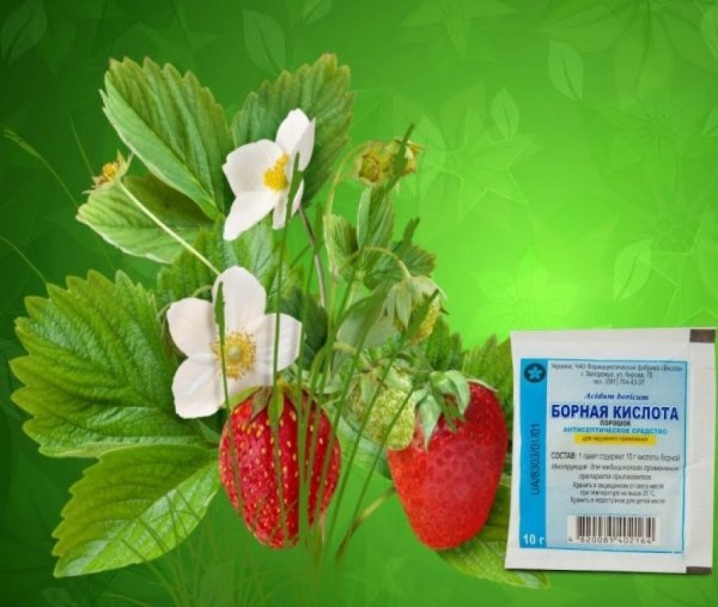
How to apply correctly?
You can feed the plants in the garden, as already mentioned, by root and foliar methods. At the same time, foliar dressing is much more economical than root dressing, since the added compounds in the soil can be washed out with water. But direct spraying of leaves and branches allows you to transport useful minerals directly to the elements of the plant - the consumption of substances is less. Therefore, these methods should be rationally combined.
However, there are situations when root irrigation does not give the desired effect, for example, when the crop is grown in alkaline or acidic soil, which makes it much more difficult to absorb trace elements from the soil.

However, fertilization using the foliar method in the open field should be subject to certain rules:
-
the degree of concentration of the active ingredient should be slightly lower than with a similar top dressing through the root system;
-
there should be no chlorine-containing elements in the water;
-
top dressing must be sprayed over the leaves, covering both the outer and inner sides;
-
an acceptable time for processing plants in the garden is morning or late evening, so that the culture has enough time to assimilate the necessary microelements;
-
it is worth paying attention to the temperature level - if it is more than +28 degrees, then you should not fertilize;
-
we recommend purchasing ready-made solutions (for example, "Solution"), where there is a corresponding and detailed instructions for the use of the drug;
-
we do not recommend using ash in conjunction with nitrogen fertilizers, since if they combine, ammonia is formed, which can severely damage the plant.
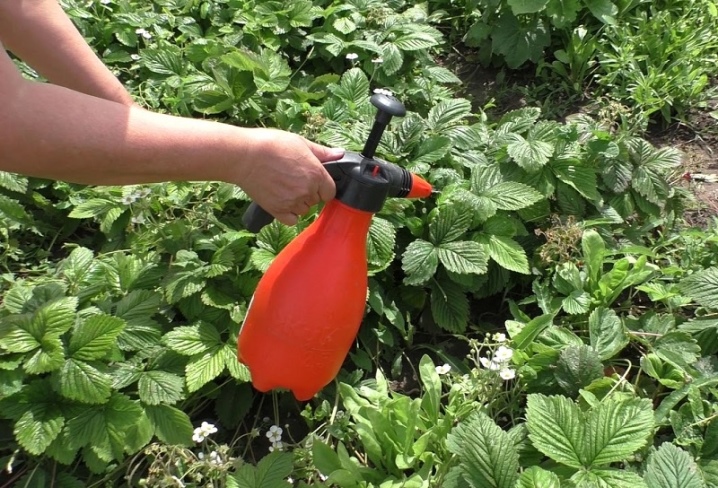
How often can you use it?
The rate of use of boric acid during the season is 3 times.
-
The first time the product is applied in the spring, during the period of snow melting.
-
The second is at the initial stage of budding (with a weak solution of a trace element).
-
For the third time, the procedure is carried out by treating bushes with ripening berries (with a weakly concentrated solution).
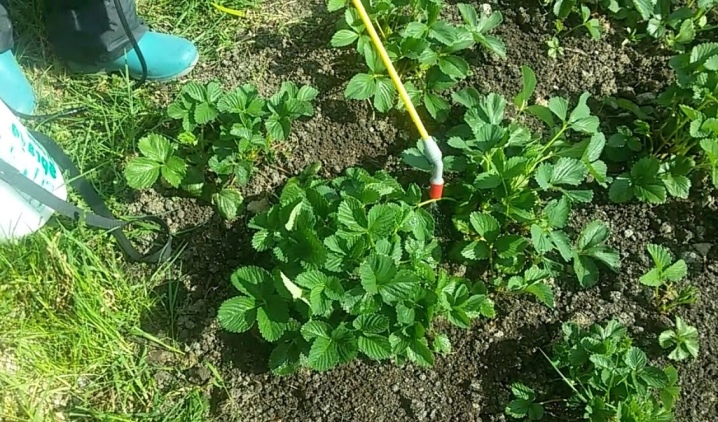
Common mistakes
Some gardeners use boric solutions, making some mistakes, which harm both the yield and the quality of the fruit. Among the typical inaccuracies - spraying with a solution of already opened flowers and ripening fruits.
This can lead to the accumulation of the trace element in fruits, often stimulating the development of kidney diseases in humans after eating berries.
A serious mistake is the addition of boron to the soil, where there is no shortage of this substance, which can lead to the death of the bushes. Culture and overdose do not bring anything good.
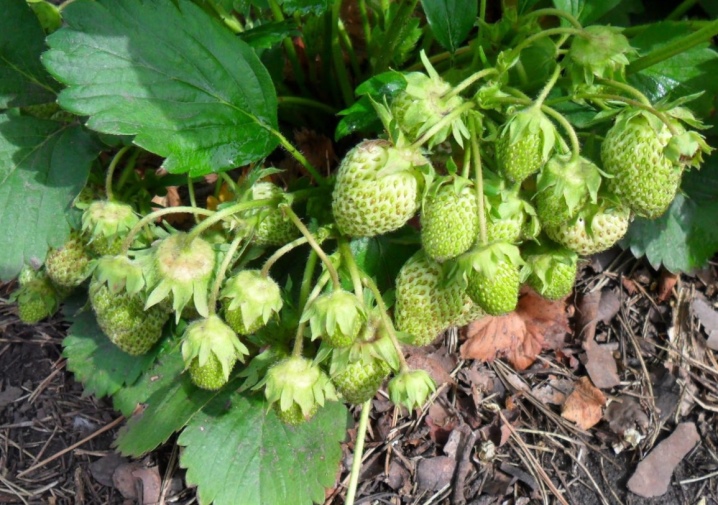













The comment was sent successfully.